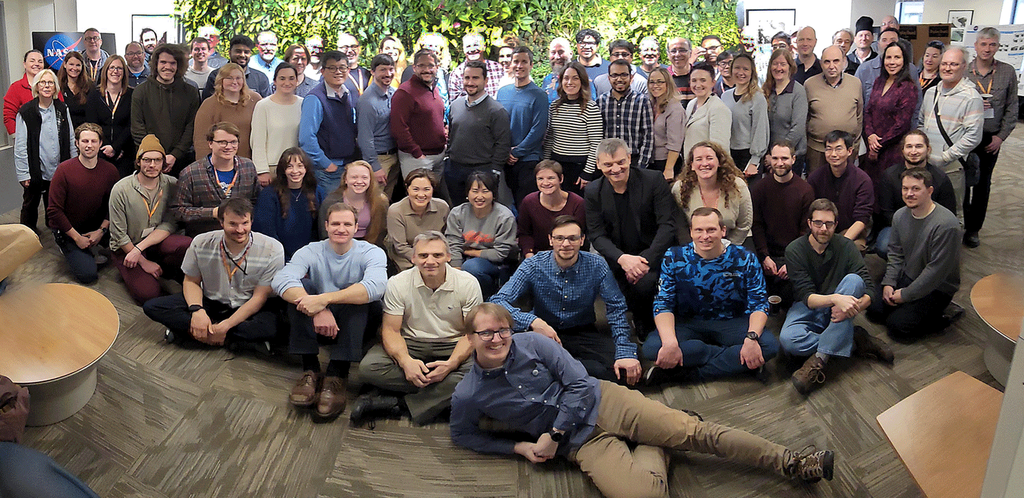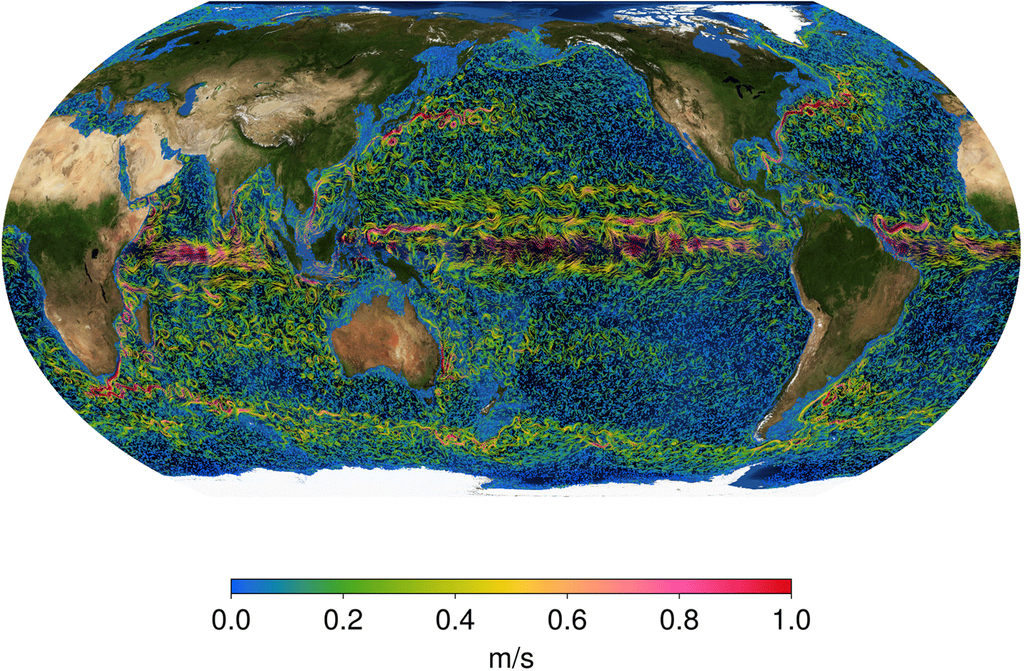1 min read
Digel Cloud 2S
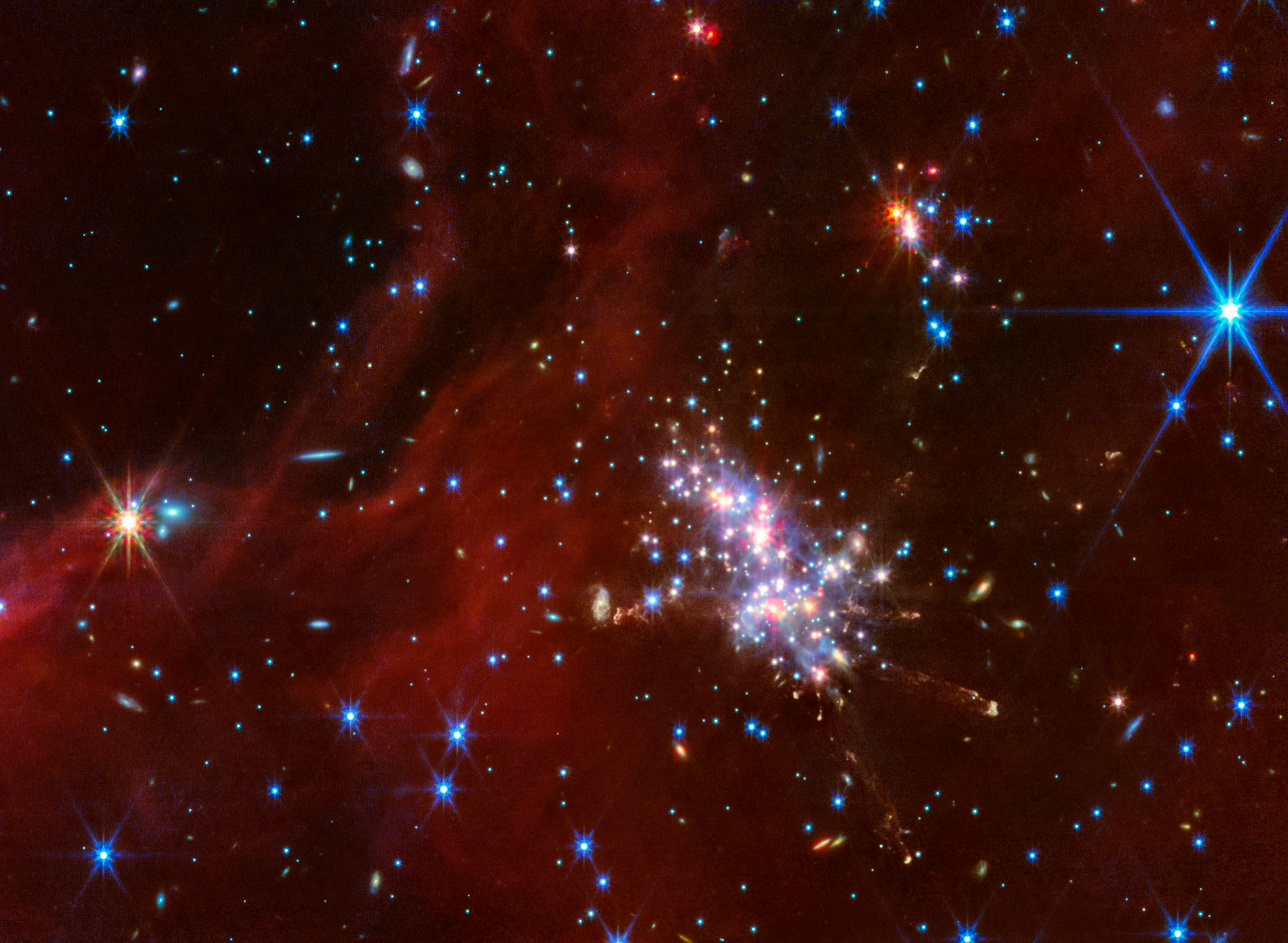
NASA’s James Webb Space Telescope observed the outskirts of our Milky Way galaxy. Known as the Extreme Outer Galaxy, this region is located more than 58,000 light-years from the Galactic Center.
To learn more about how a local environment affects the star formation process within it, a team of scientists directed the telescope’s NIRCam (Near-Infrared Camera) and MIRI (Mid-Infrared Instrument) toward a total of four star-forming areas within Digel Clouds 1 and 2: 1A, 1B, 2N, and 2S.
In the case of Cloud 2S, shown here, Webb revealed a luminous main cluster that contains newly formed stars. Several of these young stars are emitting extended jets of material from their poles. To the main cluster’s top right is a sub-cluster of stars, a feature that scientists previously suspected to exist but has now been confirmed with Webb. Additionally, the telescope revealed a deep sea of background galaxies and red nebulous structures that are being carved away by winds and radiation from nearby stars.
About the Object
- R.A. PositionR.A. PositionRight ascension – analogous to longitude – is one component of an object's position.02:48:28.45
- Dec. PositionDec. PositionDeclination – analogous to latitude – is one component of an object's position.+58:23:29.72
- ConstellationConstellationOne of 88 recognized regions of the celestial sphere in which the object appears.Perseus
- DistanceDistanceThe physical distance from Earth to the astronomical object. Distances within our solar system are usually measured in Astronomical Units (AU). Distances between stars are usually measured in light-years. Interstellar distances can also be measured in parsecs.About 40,000 light-years
- DimensionsDimensionsThe physical size of the object or the apparent angle it subtends on the sky.Image is 1.8 arcmin across (about 21 light-years)
About the Data
- Data DescriptionData DescriptionProposal: A description of the observations, their scientific justification, and the links to the data available in the science archive.
Science Team: The astronomers who planned the observations and analyzed the data. "PI" refers to the Principal Investigator.This image was created with Webb data from proposal: 1237 (M. Ressler); Image Processing: Joseph DePasquale (STScI)
- InstrumentInstrumentThe science instrument used to produce the data.NIRCam, MIRI
- Exposure DatesExposure DatesThe date(s) that the telescope made its observations and the total exposure time.17 Jan 2023
- FiltersFiltersThe camera filters that were used in the science observations.NIRCam: F115W, F150W, F200W, F356W, F444WMIRI: F770W, F1280W
- Object NameObject NameA name or catalog number that astronomers use to identify an astronomical object.Digel Cloud 2
- Object DescriptionObject DescriptionThe type of astronomical object.Star cluster on the outskirts of the Milky Way galaxy
- Release DateSeptember 12, 2024
- Science ReleaseNASA’s Webb Peers into the Extreme Outer Galaxy
- CreditImage: NASA, ESA, CSA, STScI, Michael Ressler (NASA-JPL)

These images are a composite of separate exposures acquired by the James Webb Space Telescope using the NIRCam and MIRI instruments. Several filters were used to sample wide wavelength ranges. The color results from assigning different hues (colors) to each monochromatic (grayscale) image associated with an individual filter. In this case, the assigned colors are: Purple: F115W, Blue: F150W, Green: F200W, Yellow: F356W, Orange: F444W, Red: F770W, Red: F1280W
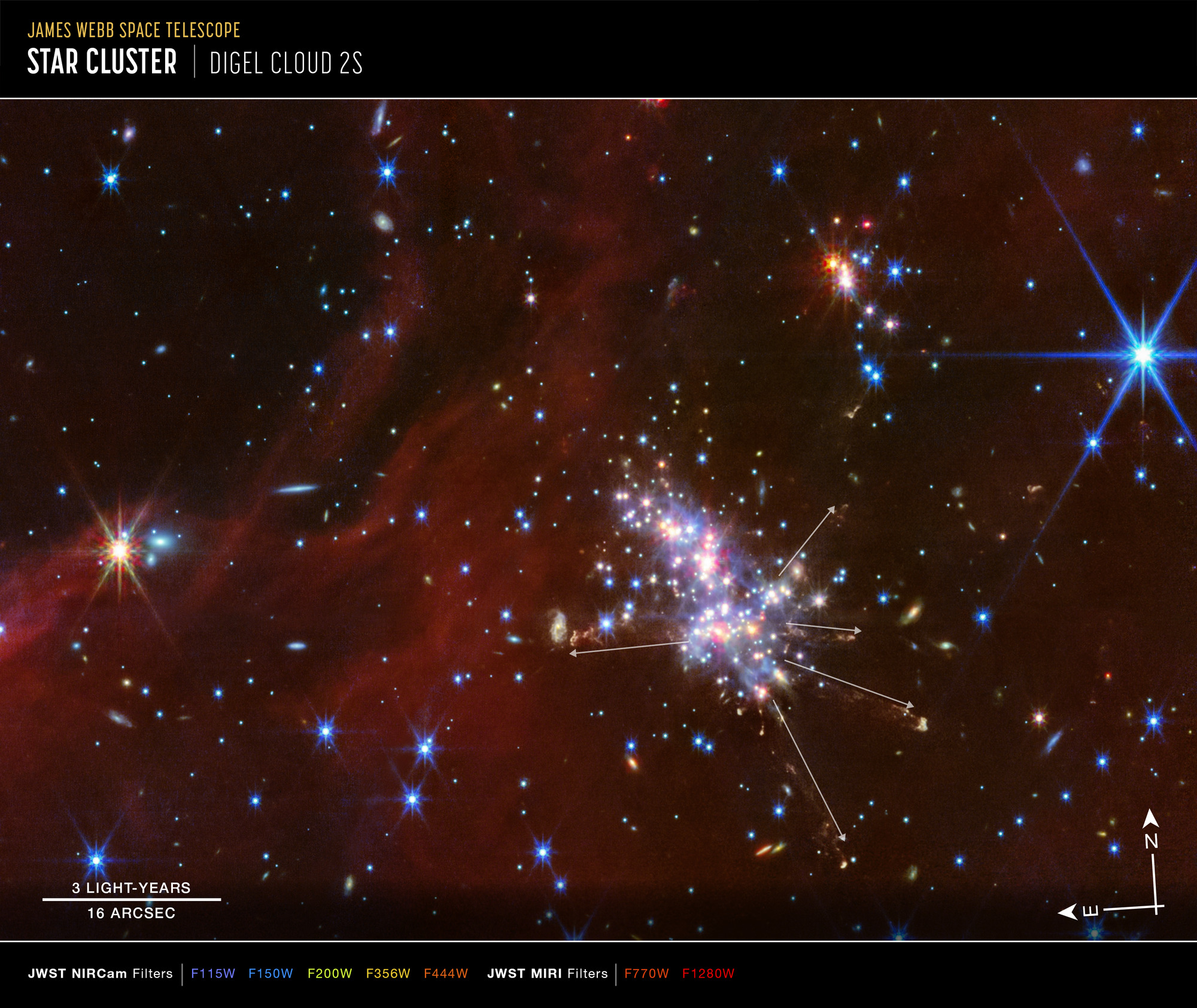
Related Images & Videos
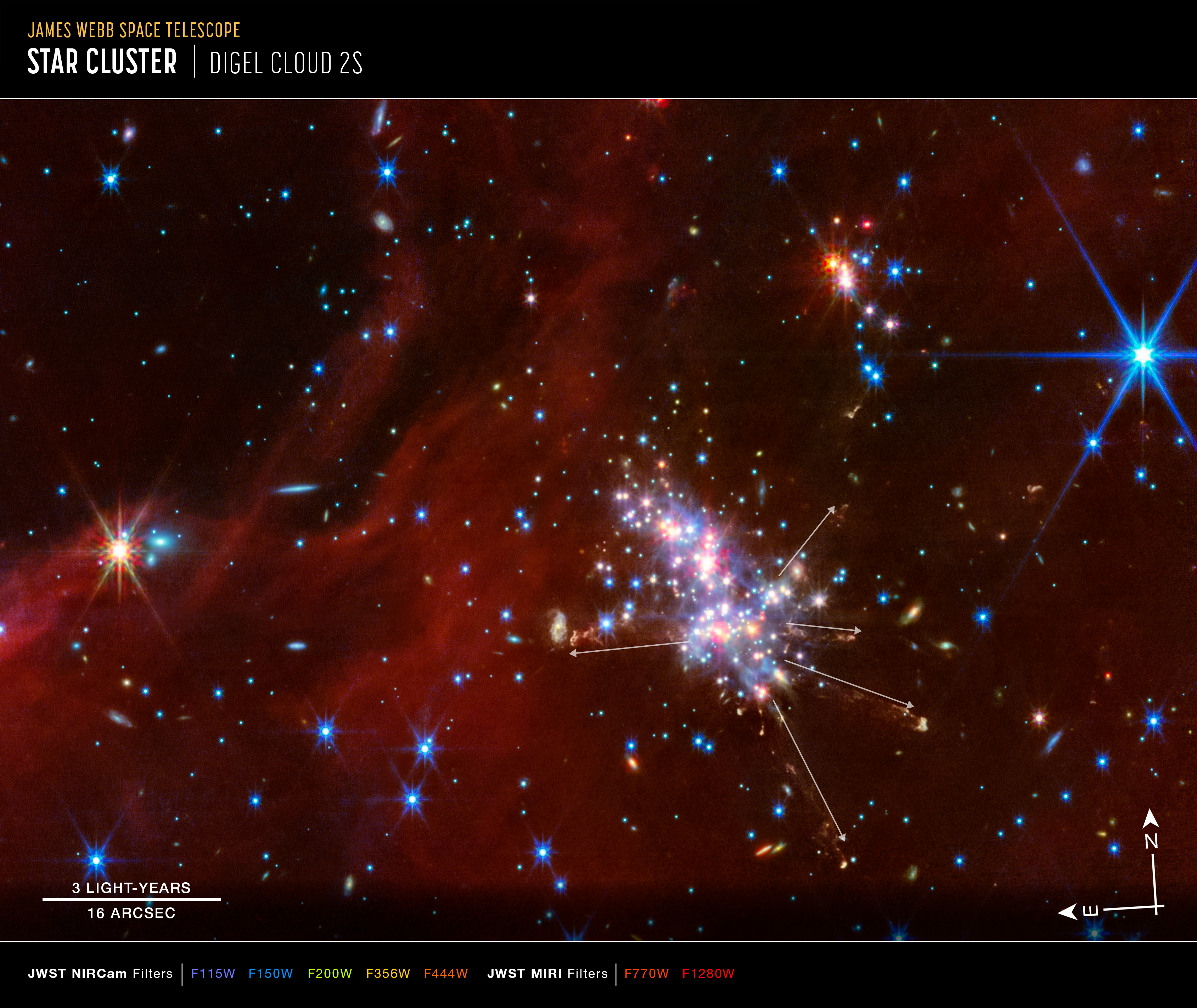
Digel Cloud 2S (Compass Image)
Annotated image of Digel Cloud 2S captured by Webb's NIRCam (Near-Infrared Camera) and MIRI (Mid-Infrared Instrument), with compass arrows, a scale bar, color key, and graphic overlays for reference. The north and east compass arrows show the orientation of the image on the sky....
Share
Details
Laura Betz
NASA’s Goddard Space Flight Center
Greenbelt, Maryland
laura.e.betz@nasa.gov
NASA, ESA, CSA, STScI, Michael Ressler (NASA-JPL)



















